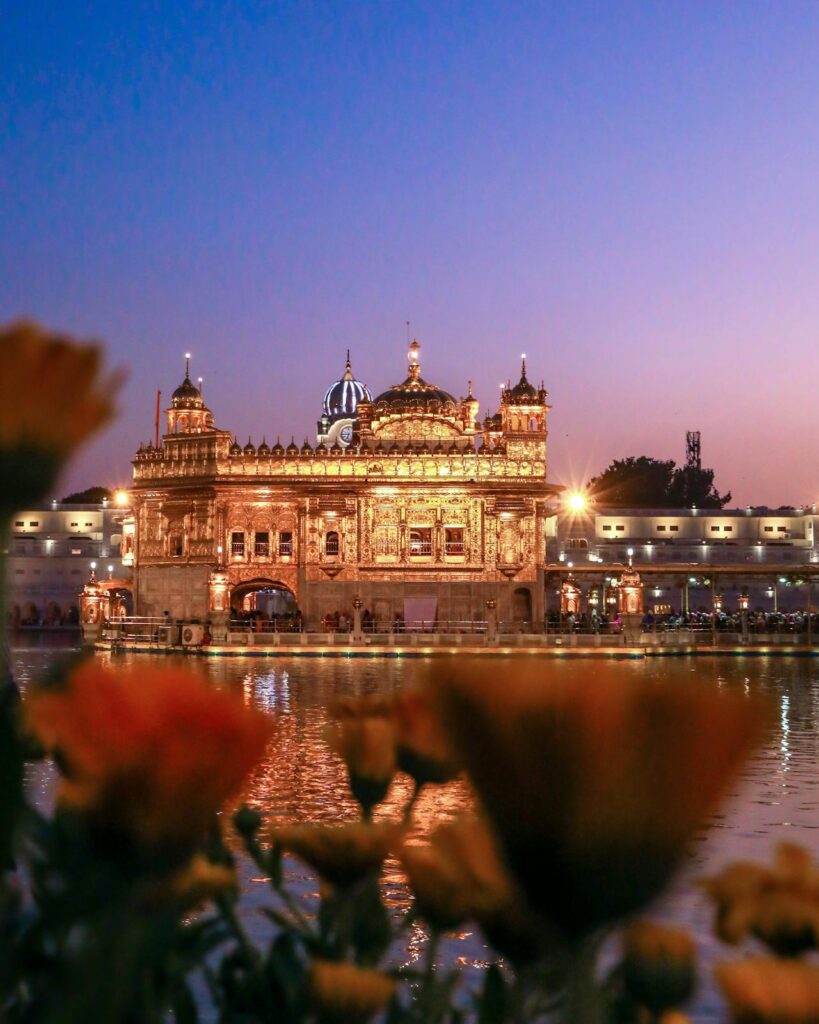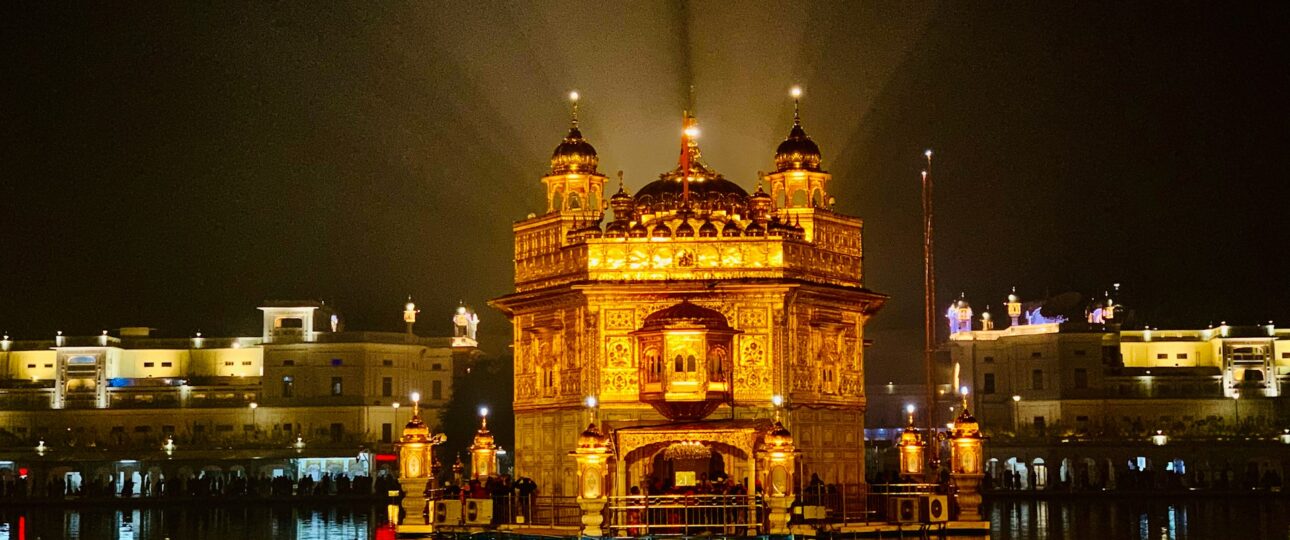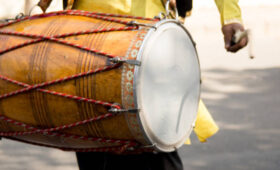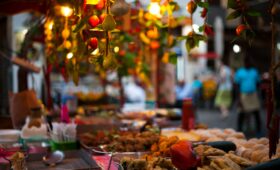The Golden Temple, also known as Sri Harmandir Sahib, is a place of immense spiritual significance and architectural beauty located in the heart of Amritsar, Punjab, India. It serves as the central religious and cultural symbol for Sikhism, attracting millions of visitors from all over the world each year. Here are 20 interesting facts about this revered shrine-
Contents
Spiritual Perspective Over Temporal Concerns. 1
Canal System of Golden Temple pool 1
Continuous Prayers During World War I 2
Special Celebrations- Jalau. 2
Toshakhana- The Enigmatic Vault. 2
Foundation stone– The foundation stone of the Golden Temple was laid by a Muslim Saint Hazarat Mian Mir Ji in December on 1588
Brickwork at Golden temple-The Golden Temple is crafted using Nanakshahi Brick, each measuring 1 inch thick, 3 inches wide, and 18 inches long. What’s unique about this brickwork is its resilience. If one brick is removed, the others remain steadfast. Unlike modern modular bricks, each brick requires equal effort to remove, preserving the integrity of the structure.
The sanctum sanctorum– known as Darbar Sahib, is a square measuring 40 feet by 40 feet. Surrounding it is a 13-foot-wide pathway called parikrama on all sides. This layout, with the entire complex within the sarovar (sacred pool), forms a square of 66 feet by 66 feet.
Spiritual Perspective Over Temporal Concerns-From the Akal Takht, one can have a clear view of the Darbar Sahib, but the reverse isn’t true; you can’t see the Akal Takht from the Darbar Sahib. This architectural arrangement, due to the construction of Deorhi, symbolizes a broader spiritual perspective surpassing temporal concerns.

Sun-dial– A small Sun-dial is located on the midway from Dehori to Golden temple (Darbar Sahib).It must have been used to watch time during olden days.
Amrit Sarovar: The temple is surrounded by a sacred pool called Amrit Sarovar, meaning “Pool of Nectar.” It’s believed that taking a dip in its holy waters cleanses the soul and all the sins goes away.
Architectural Splendor-The Golden Temple’s architecture is a blend of Hindu and Islamic styles, reflecting the inclusive ethos of Sikhism.
Canal System of Golden Temple pool -.The Sarovar, or holy tank, at the Golden Temple is replenished by a unique underground canal known as Hanslee, sometimes referred to informally as Sikhaan Wali Nehar. This canal system discreetly channels water to the Sarovar, ensuring its constant replenishment and purity.
Open to All– Golden temple have four doors in all the four directions. Welcoming people from all walks of life, regardless of their religion, caste, or creed.
Community Kitchen (Langar)– The temple runs one of the largest community kitchens in the world, serving free meals (langar) to tens of thousands of visitors every day, promoting the principle of equality and service. The langar remains open 24 hours. The langar is entirely run by volunteers, showcasing the spirit of selfless service (seva) integral to Sikhism.
Golden Dome-The temple’s main dome, adorned with gold leaf, represents an inverted lotus flower, symbolizing purity and divinity. Golden Temple got covered by Gold in the 1830 by Maharaja Ranjit almost two centuries after it was built
Gurudwara Kotha Sahib-The ground floor of the Akaal Takht building is known as Kotha Sahib, deriving its name from the place where Guru Arjan Dev Ji supervised construction activities. Interestingly, Kotha Sahib stands in direct alignment with the Golden Temple building, yet all the floors above it are subtly angled towards the east. This symbolic gesture signifies a profound concept: the earthly seat of temporal power, represented by the Akaal Takht, cannot directly confront the spiritual realm embodied by the Hari Mandir, the Temple of God. This unique architectural expression is unparalleled worldwide.
Ghee Lamps -Before 1930, the Darbar Sahib relied solely on the gentle glow of ghee lamps to illuminate the sacred space during dark hours, especially for the reading of the hukamnama. It wasn’t until electricity was installed
Continuous Prayers During World War I
During the First World War, the British Government organized a continuous series of akhand paath on the first floor of the Darbar Sahib building. They prayed fervently for victory during this difficult time.
Special Celebrations- Jalau
On five occasions of Gurpurabs, a special event called “Jalau” is organized for two hours in the Darbar Sahib. During Jalau, all four door Kivaarhs are replaced by identical Golden Ones, adding a radiant touch to the sanctum.
Engravings of Sacred Texts–If you look at the arches of the first floor of the sanctum sanctorum building, you’ll find the complete Japuji Sahib, Jaap Sahib, and Sukhmani Sahib engraved there. These sacred texts adorn the architecture, adding spiritual significance to the space.
Toshakhana- The Enigmatic Vault
Toshakhana serves as the repository for storing Jalau ornaments. What makes it truly intriguing is its lock system. The vault has four keys, but even if one possesses all four keys, unlocking it is no easy task. Each key opens only one-fourth of a cycle, and they must be used in a specific order. Unless the four quarters are complete, the lock remains firmly shut, guarding its treasures.
Symbol of Resilience– The Golden Temple has withstood numerous invasions, including the attacks by Afghan invaders and the Indian Army in the 20th century, emerging as a symbol of Sikh resilience and perseverance.
Music Tradition– The temple is renowned for its devotional music, with hymns (kirtans) sung melodiously throughout the day, creating an atmosphere of spirituality and tranquility.
Global Appeal– The Golden Temple serves as a beacon of Sikhism worldwide, drawing pilgrims and tourists from every corner of the globe.
Spiritual Pilgrimage– Visiting the Golden Temple is considered a spiritual pilgrimage for Sikhs, offering a transformative experience of peace, piety, and unity.
In conclusion, the Golden Temple stands not only as a magnificent architectural marvel but also as a symbol of Sikh identity, hospitality, and inclusivity. Its rich history, cultural significance, and spiritual aura continue to captivate millions, making it a cherished treasure of humanity.



